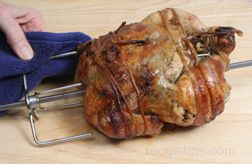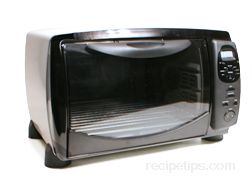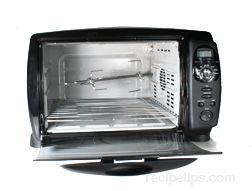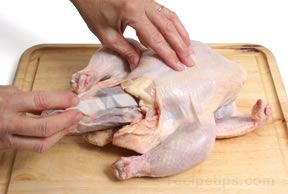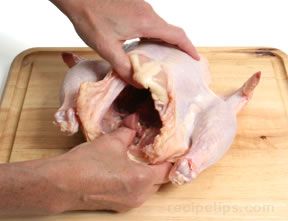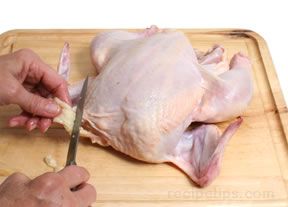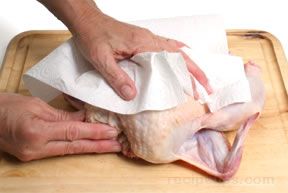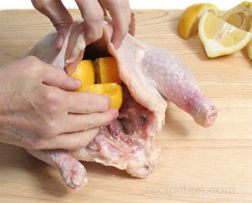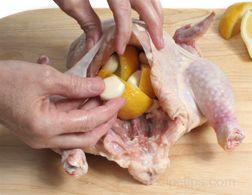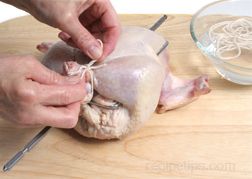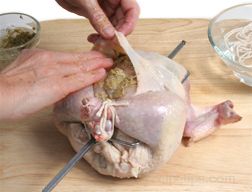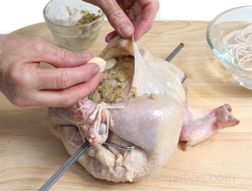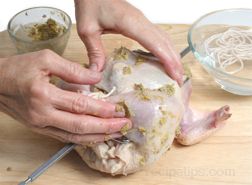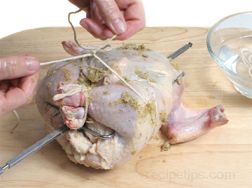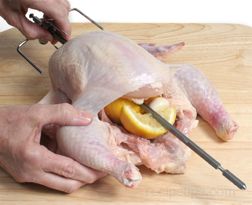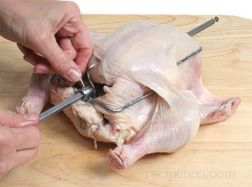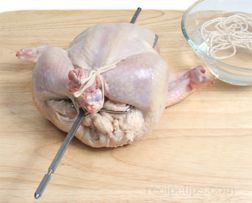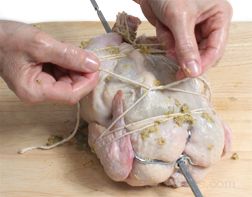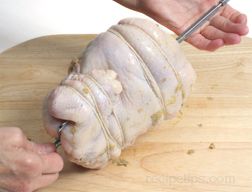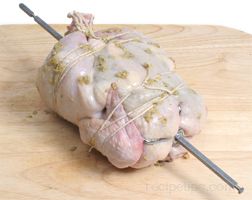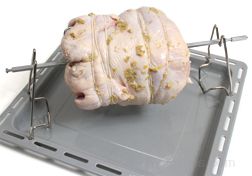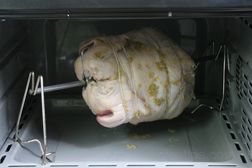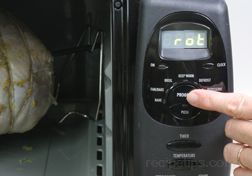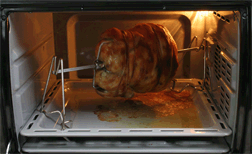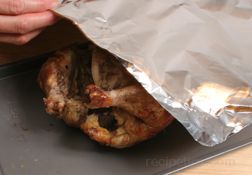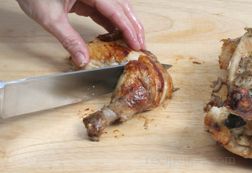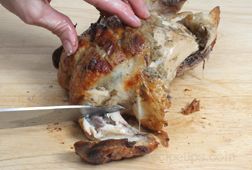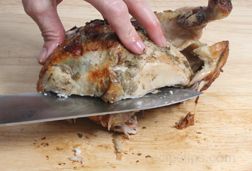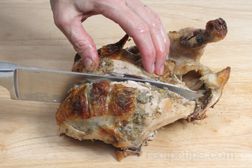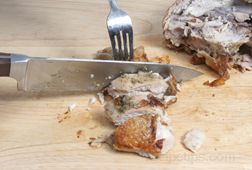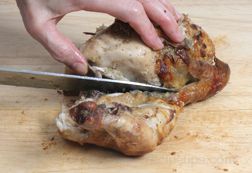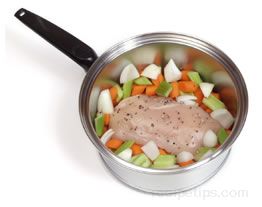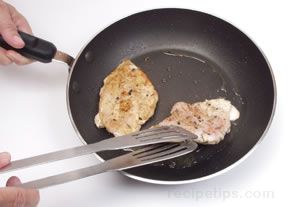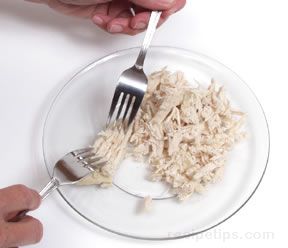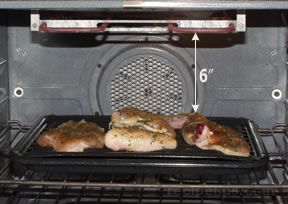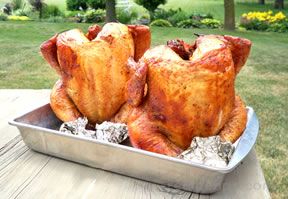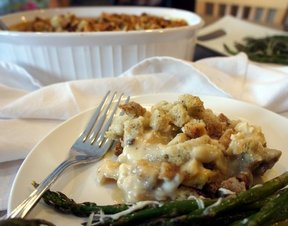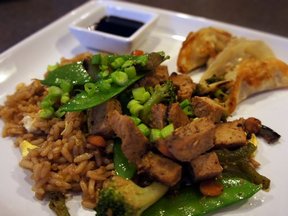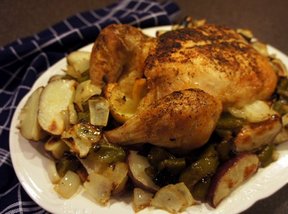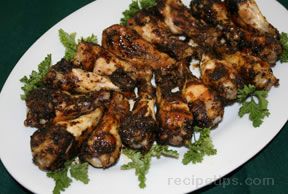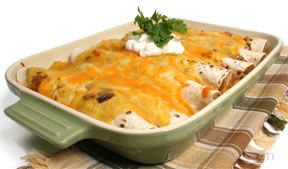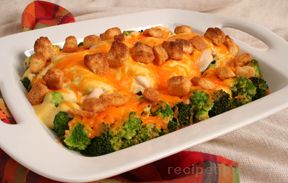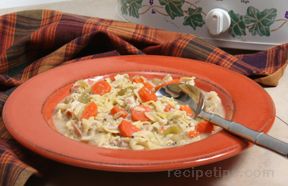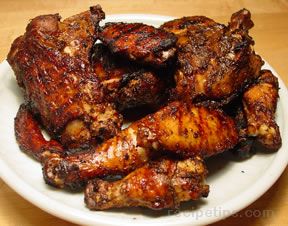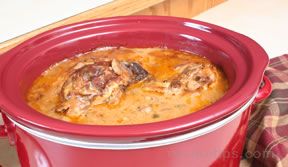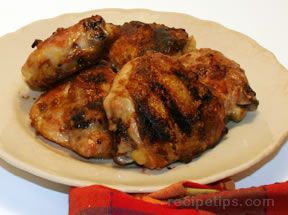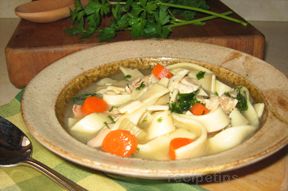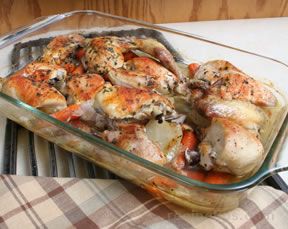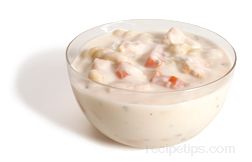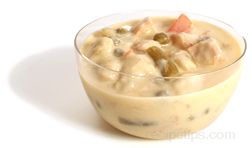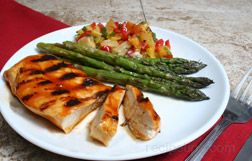|
Rotisserie Cooking Units | Rotisserie Chicken Preparation Rotisserie cooking is a great method to use for preparing chicken. The chicken will have a reduced fat content because the fat drains off and it will not be sitting in the fat as it cooks. The fat will flavor and moisten the meat as it cooks and drips from the chicken. The result of rotisserie cooking a chicken is moist flavorful meat with a nicely browned, crispy skin. The information below provides basic instructions on rotisserie cooking a chicken. Rotisserie cooking can be accomplished using several different rotisserie units. Charcoal and gas grills have rotisserie units as optional attachments and some grills are equipped with rotisseries as a standard feature. There are also several different types of countertop rotisserie units that are made to be used indoors. These units are available in a variety of sizes and types. There are countertop convection ovens also available that have the option to use rotisserie units in them. The basic method for rotisserie cooking is the same for any type of rotisserie cooking unit. The heat source is just provided in a slightly different manner in each one. The rotisserie information below shows the chicken being cooked in a countertop convection oven. For more information on rotisserie cooking using other types of units, see Turkey Rotisserie Grilling, Rotisserie Grilling Turkey, or Rotisserie Grilling. For whatever type of rotisserie unit you are going to use, be sure to read the instructions provided by the manufacturer so the rotisserie is used properly and safely.
Cleaning | Flavoring | Place on Spit Preparing a chicken for the rotisserie is not much different than preparing it for roasting. Be sure to select a chicken that will be an appropriate size for the rotisserie unit you are using. If a frozen chicken is purchase, be sure it is completely thawed before you start to cook it. Follow the simple instructions below on preparing the chicken. Cleaning the Rotisserie Chicken
The rotisserie chicken can be cooked without any extra flavoring added if desired and you will still have a delicious chicken after it has been basted by its own fats and juices. But, adding different flavorings will enhance the flavor of the chicken to your desired taste. The chicken can be flavored with the use of marinades and rubs or by basting it while it is being cooked on the rotisserie. There are an endless number of recipes for marinades, rubs, and bastes that will provide great flavor and juiciness to your chicken. Don't be afraid to try a mixture of your own favorite flavorings. There are many choices of flavorings that can be used, such as fruits, vegetables, herbs, and spices. Butter and olive oil can also be used to flavor and moisten the chicken as it cooks. Provided below is just one example of a number of flavorings that can be used to enhance the flavor of the rotisserie chicken.
Place Chicken on Rotisserie Spit The chicken needs to be placed on the spit so that it is centered and evenly balanced. It must also be held in place so it does not move around as it is cooking. If the chicken was loose on the spit rod and unbalanced, the heaviest side would always drop to the bottom and the chicken would not turn evenly as it is cooking on the rotisserie. See the instructions below on how to place the chicken on the rotisserie spit.
Rotisserie Cooking the Chicken The heat source for cooking the chicken should generally be preheated before placing the spit in the rotisserie unit for cooking. Follow the instructions for assembling the rotisserie spit provided in the user's manual for the type of rotisserie unit you are using. For this convection oven, it may be desirable to wait to start the oven until the rotisserie unit is properly secured because it takes some maneuvering to get the spit rod into the spit mount hole. Because the spit mount hole is in the back corner of the oven, it will be easier to insert the rod if you do not have to worry about a hot oven. The convection oven above has a rotisserie heating function that it is set on for rotisserie cooking. The start button is pressed and the oven turns on and begins to heat up.
A whole rotisserie chicken is carved in the same manner as other whole cooked chickens. Allowing the chicken to rest as stated above will allow the juices to be redistributed throughout the meat, resulting in a firmer, juicier and easier to carve chicken. Choose a carving knife that is long enough to cut the entire length of the breast. It is important that the knife be extremely sharp so it allows thin slices to be carved and easily cuts through the joints when necessary. Shown below are the steps to carving a chicken.
| ||||||||||||||||||||||||||||||||||||||||||||||||||||||||||||||||||||||||||||||||||||||||||||||||||||||||||||||||||||||||||||||||||||||||||
Loading
Rotisserie Chicken

Read Reviews (4)

Provided By
RecipeTips
RecipeTips
Reviewed By Stardust
"As a guide to how to rotisserie a chicken I rate this article as one of the ... read full review"
"As a guide to how to rotisserie a chicken I rate this article as one of the ... read full review"

Loading

Reviewed By Stardust
"As a guide to how to rotisserie a chicken I rate this article as one of the best. I used this article to prepare the chicken, and I used the Rotisserie Chicken with Herbs Recipe to complete my preparation. Absolutely top notch!"

Reviewed By Judy Leong
"I have previously attempted to roast a rotisserie chicken using my newly bought rotisserie roaster oven. However, it wasn't as well roasted as some parts were not properly cooked. After reading through your processes and simple steps, I will have more confidence and will try out roasting a rotisserie chicken again. I think the steps and instructions are fantastic and I am confident that I will get a perfect roast this time. I will post a picture of it with my comments once I get it. Hurray for the instructions and step by step pictures shown."

Reviewed By Artscet
"Great information. Delicious recipe too. It was my first attempt at rotisserie grilling so it was really nice to be able to see the step-by-step instructions. I used the "Rotisserie Grilling" link at the top to see what temperature to use for grilling because I was doing it on our grill. I grilled on high for about 15 minutes and then turned down to just a little under medium. Turned out great."

Reviewed By jwc
"I made this chicken in my convection oven - 375 for 1 hr 10 minutes. I didn't have a lemon, so I used an orange instead. It was delicious!"
Advertisement
Advertisement

